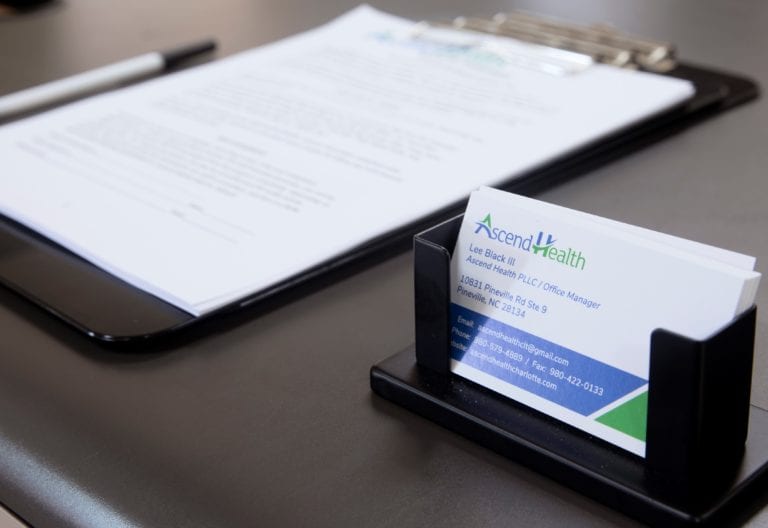The Importance of Medication-Assisted Treatment
Understanding the significance of Medication-Assisted Treatment (MAT) is crucial for anyone seeking effective opioid addiction treatment. This section will explore what MAT is and its numerous benefits in battling substance use disorders.
Understanding Medication-Assisted Treatment
Medication-Assisted Treatment (MAT) combines FDA-approved medications like Methadone, Buprenorphine (Suboxone), and Naltrexone with counseling and behavioral therapies. This integrated approach aims to normalize brain function, reduce cravings, and prevent relapse.
MAT medications help address both the physical and psychological aspects of addiction, supporting individuals through the recovery process. As Alex Azar II, former Secretary of the U.S. Department of Health and Human Services, remarked, “Medication-assisted treatment works. The evidence on this is voluminous and ever-growing… failing to offer MAT is like trying to treat an infection without antibiotics.”
| Medication | Use | Key Benefits |
|---|---|---|
| Methadone | Long-term treatment | Reduces cravings, normalizes brain function |
| Buprenorphine (Suboxone) | Opioid use disorder | Reduces opioid use, improves social functioning |
| Naltrexone | Prevents relapse | Non-addictive, prevents opioid effects |
Benefits of Medication-Assisted Treatment
The advantages of MAT are substantial and backed by extensive research. Remaining in long-term treatment with medications like Methadone or Buprenorphine is associated with improved outcomes for individuals with opioid use disorder.
- Reduction in Opioid Use: MAT effectively reduces opioid use, decreasing the likelihood of relapse and overdose deaths.
- Improved Social Functioning: Individuals on MAT often show improved social, occupational, and family functioning.
- Reduced Criminality: MAT participants tend to engage in fewer criminal activities.
- Lower HIV Transmission Risk: By reducing injection drug use, MAT lowers the risk of HIV transmission.
- Enhanced Quality of Life: Improved overall well-being and quality of life are common among those in MAT.
| Benefit | Percentage Improvement |
|---|---|
| Reduction in opioid use | 50% reduction in mortality |
| Improved social functioning | Significant positive changes |
| Lower HIV transmission risk | Reduced behaviors associated with HIV transmission |
MAT is an essential part of opioid addiction treatment, especially when supported by comprehensive counseling and behavioral therapies. By integrating medication with holistic treatment approaches, personalized treatment plans, and robust support systems, we can pave the path toward effective recovery.
For more insights on medication management and other treatments, please explore our associated articles on addiction treatment with Suboxone and Suboxone treatment for opioid addiction.
Medications for Opioid Use Disorder
Understanding the medications available for treating opioid use disorder is crucial in making informed decisions. At Ascend Health, we prioritize the most effective treatments for our patients, including methadone, buprenorphine, and naltrexone. Each medication offers unique benefits tailored to the needs of individuals seeking recovery.
Methadone for Opioid Use Disorder
Methadone is a long-standing treatment option, used since 1947 for opioid use disorder. Methadone works by reducing withdrawal symptoms and blocking the euphoric effects of opioids. Patients on methadone showed significant improvement, with 33 percent fewer opioid-positive drug tests and a 4.44 times higher likelihood of remaining in treatment compared to control groups (National Institute on Drug Abuse).
Key benefits of methadone:
- Reduces the risk of opioid-related mortality
- Lowers the transmission risk of infectious diseases like HIV and HCV
- Decreases criminal behavior associated with drug use
- Increases the likelihood of employment
Buprenorphine for Opioid Use Disorder
Buprenorphine is another effective treatment for opioid use disorder. Patients maintained on a daily dose of 16 mg of buprenorphine are more likely to stay in treatment and show fewer opioid-positive drug tests compared to placebo-treated patients (National Institute on Drug Abuse). Buprenorphine’s flexible dosing and safety profile make it a preferred option for many.
Key benefits of buprenorphine:
- Decreases the number of opioid-positive drug tests
- Effective at medium-to-high doses, comparable to methadone
- Appropriate for a wide range of patients due to its safety profile
Naltrexone for Opioid Use Disorder
Naltrexone works differently from methadone and buprenorphine. It is an opioid antagonist that blocks the euphoric effects of opioids, without activating opioid receptors. This helps prevent relapse by eliminating the rewarding aspects of opioid use. Extended-release naltrexone formulations offer the convenience of monthly dosing, enhancing treatment adherence.
Key benefits of naltrexone:
- Prevents relapse by blocking opioid effects
- Does not produce euphoria or dependence
- Suitable for individuals who have completed detoxification
| Medication | Mechanism | Key Benefits | Likelihood of Treatment Retention |
|---|---|---|---|
| Methadone | Opioid Agonist | Reduces withdrawal symptoms, lowers infectious disease transmission, increases employment | High |
| Buprenorphine | Partial Opioid Agonist | Reduces opioid-positive drug tests, flexible dosing, safe | High |
| Naltrexone | Opioid Antagonist | Blocks opioid effects, prevents relapse, no dependence | Medium |
Each of these medications plays a vital role in our medication assisted treatment programs at Ascend Health. They significantly contribute to reducing opioid use and improving the overall well-being of patients. Our dedicated team ensures that treatment plans are personalized to meet each individual’s unique needs, whether it involves methadone, buprenorphine, or naltrexone.
For more information on our addiction treatment with suboxone and other medications, explore our opioid addiction treatment services. For those seeking to understand the comprehensive benefits, our article on the benefits of suboxone treatment offers detailed insights.
The Effectiveness of MAT Medications
Comparing Methadone and Buprenorphine
When it comes to medication assisted treatment, both methadone and buprenorphine have proven to be effective options in reducing opioid use. According to research by the National Institute on Drug Abuse, no significant differences exist in opioid-positive drug tests or self-reported heroin use when treating with either methadone or buprenorphine at medium-to-high doses. However, flexible dose regimens of buprenorphine and low doses below 6 mg are less effective at retaining patients in treatment compared to methadone.
Notably, buprenorphine is associated with a lower risk of drug overdose-related hospitalizations or ER visits compared to methadone. An adjusted hazard ratio of 0.84 (95% confidence interval: 0.73-0.97) indicates that buprenorphine users have better outcomes in terms of reduced negative events (NCBI).
Extended-Release Naltrexone
Extended-release naltrexone is another viable option in the realm of MAT. Studies have shown that this treatment is associated with reduced opioid use, though its effectiveness in retaining patients remains less clear. Real-world data suggests a low percentage of patients opt for extended-release naltrexone, and adherence rates are low, which can pose challenges to the treatment’s overall effectiveness.
Prescription Rates and Outcomes
Examining prescription rates and outcomes can provide insight into the usage and effectiveness of these medications. Buprenorphine often stands out due to its balanced efficacy in retention and lower overdose risk, making it a preferred option among suboxone treatment for opioid addiction programs like ours.
Our commitment to providing suboxone treatment with Ascend Health reflects our dedication to utilizing the most effective medication options. We prioritize patient safety and treatment success, making us a reliable choice for opioid addiction treatment.
For additional information on the benefits of our suboxone treatment, visit our page on the benefits of suboxone treatment. If you are interested in understanding more about how these medications can play a part in your treatment plan, explore our resources on medication management.
Treatment Challenges and Considerations
Medication-Assisted Treatment (MAT) is an invaluable resource in the battle against opioid addiction. However, it comes with its own set of challenges and considerations.
Challenges of Medication-Assisted Treatment
While MAT is an effective way to treat substance use disorders, there are some challenges associated with it. Concerns about dependency, undesirable side effects, and regulatory burdens are significant issues that need to be addressed. MAT can sometimes shift dependency from one drug to another. However, by following treatment guidelines, safer medications can be gradually tapered under medical supervision. This approach helps to alleviate withdrawal symptoms and minimize cravings, leading to more successful recovery outcomes.
| Challenges | Description |
|---|---|
| Dependency Shift | MAT may transition dependency to another drug |
| Side Effects | Possible undesirable reactions |
| Regulatory Burdens | Compliance with legal and medical guidelines |
More about overcoming these challenges can be found in our medication management section.
Overcoming Stigma and Access Barriers
Stigma is a significant barrier that prevents many individuals from seeking MAT. Negative societal perceptions and judgment can deter people from accessing this effective treatment option. Overcoming stigma is crucial in encouraging individuals to seek the help they need. Education and awareness campaigns can play a vital role in changing societal attitudes, making MAT more acceptable and accessible.
Moreover, ensuring access to MAT is a priority. This involves addressing cost barriers, improving regulatory frameworks, and increasing the availability of MAT services in underserved areas. Our comprehensive approach to suboxone treatment with Ascend Health ensures that barriers are minimized.
| Access Barriers | Solutions |
|---|---|
| Stigma | Education and awareness campaigns |
| Cost | Affordable treatment options |
| Availability | Increased services in underserved areas |
Diversity in MAT Usage
Diversity in MAT usage highlights the need for personalized treatment approaches. Different medications or modalities may be more suitable for specific populations. Recognizing and addressing these unique needs ensures that individuals receive the most appropriate and effective treatment for their substance use disorders.
For instance, some patients may benefit more from buprenorphine, while others may find methadone or naltrexone to be more effective. Tailoring treatments to individual needs and backgrounds can improve outcomes and support long-term recovery. Explore the benefits of suboxone treatment to learn more about personalized options.
| Population | Preferred Medication |
|---|---|
| Younger Individuals | Buprenorphine |
| Pregnant Women | Methadone |
| Those with Liver Issues | Naltrexone |
To learn more about our dedicated services, visit our page on suboxone treatment for opioid addiction.
By understanding and addressing these challenges and considerations, we can provide effective and compassionate care for individuals seeking recovery through Medication-Assisted Treatment.
MAT and Healthcare Policy
The Role of FDA-Approved Medications
Medication-Assisted Treatment (MAT) plays a significant role in addressing opioid use disorder (OUD). The FDA has approved three key medications for MAT: buprenorphine, methadone, and naltrexone. These medications have been shown to be safe and effective for managing OUD (FDA). At Ascend Health, we prioritize using FDA-approved medications, particularly in our suboxone treatment for opioid addiction, to ensure optimal care.
The campaign “Prescribe with Confidence: Patients with Opioid Use Disorder Need You” led by the FDA aims to increase awareness among healthcare providers about the benefits of MAT. This initiative encourages primary care providers to screen for OUD and manage it collaboratively with patients (FDA).
| Medication | FDA Approval | Safety & Efficacy |
|---|---|---|
| Buprenorphine | Approved | High |
| Methadone | Approved | High |
| Naltrexone | Approved | High |
Telehealth in MAT Delivery
Telehealth has emerged as a vital tool in expanding access to MAT services. Adults with past-year OUD who received treatment via telehealth were approximately 38 times more likely to receive medications for OUD compared to those who did not receive telehealth treatment (NIH). This underscores the importance of telehealth services in bridging treatment gaps.
At Ascend Health, we offer telehealth options for medication management and suboxone treatment with Ascend Health to ensure that our patients can access necessary care regardless of their location. Telehealth enables real-time consultations and follow-up appointments, ensuring continuous and consistent treatment.
MAT Recommendations
Our recommendations for MAT align with ongoing efforts by the FDA to identify treatment needs, expand access to existing MAT options, and promote the development of new evidence-based treatments. We emphasize the importance of personalized treatment plans and holistic treatment approaches to support long-term recovery.
Efforts to increase the prescription rates of MAT medications have shown that adults with severe OUD are five times more likely to receive these treatments compared to those with mild OUD (NIH). This highlights the need for targeted interventions and support systems tailored to individual needs.
For those exploring MAT options, we recommend:
- FDA-Approved Medications: Utilizing buprenorphine, methadone, or naltrexone as part of a comprehensive treatment plan.
- Telehealth Services: Leveraging telehealth for convenient and consistent access to care.
- Personalized Treatment Plans: Developing individualized plans to address each patient’s unique needs.
By focusing on these key areas, Ascend Health is committed to offering the most effective and accessible MAT options to support recovery and improve outcomes. For more information, please visit our pages on benefits of suboxone treatment and opioid addiction treatment.
Supporting Recovery with MAT
Holistic Treatment Approaches
At Ascend Health, we believe in a holistic approach to medication-assisted treatment (MAT), combining the use of medications with counseling and behavioral therapies. This comprehensive method addresses not just the physical aspects of addiction but also the psychological and social dimensions. Our integrated approach helps normalize brain function, reduce cravings, and prevent relapse, which is crucial for long-term recovery.
We incorporate several evidence-based psychosocial interventions, such as:
- Cognitive Behavioral Therapy (CBT)
- Motivational Interviewing
- Peer and Recovery Support Services
- Contingency Management
These interventions are designed to optimize the benefits of our comprehensive MAT services, ensuring a smoother recovery process.
Personalized Treatment Plans
We recognize that recovery is a deeply personal journey, which is why personalized treatment plans are a cornerstone of our approach to opioid addiction treatment. Our team tailors treatment to the unique needs, circumstances, and goals of each individual. This custom approach involves addressing the physical, psychological, and social aspects of addiction, ensuring that every facet of a person’s well-being is considered.
Our personalized plans include a variety of elements:
| Personalized Treatment Elements | Description |
|---|---|
| Medical Assessments | Regular evaluation of physical health |
| Psychological Support | Counseling and therapy sessions |
| Social Support | Community and family involvement |
| Medication Management | Tailored prescription of MAT medications |
This approach ensures that we adapt our treatment strategies to effectively meet the individual needs of our clients.
Importance of Support Systems
Support systems play a crucial role in the success of MAT. At Ascend Health, we emphasize the importance of support systems such as family, friends, and community networks in the recovery journey. These systems provide emotional, social, and practical support which enhances the effectiveness of MAT by addressing the multifaceted nature of addiction.
Elements of a robust support system include:
- Family Support: Engaging family members in the treatment process.
- Peer Support: Connecting with individuals who have experienced similar challenges.
- Community Resources: Access to local support groups and services.
This holistic approach ensures that our clients have the necessary support to navigate their recovery journey successfully.
For a deeper dive into the complexities and benefits of suboxone treatment, visit our sections on suboxone treatment with Ascend Health and learn more about how our dedicated services can support your recovery.



